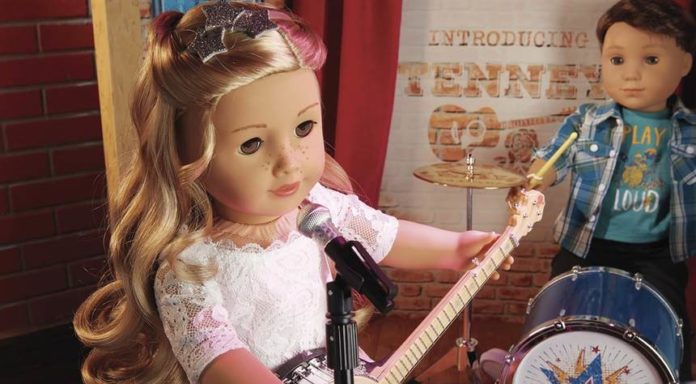Although the body positivity movement may sound like a positive thing, as I have pointed out before, famous fatties such as Lizzo have hijacked it to promote morbid obesity. Unfortunately, this is not the worst thing the body positivity movement does.
The latest agenda for the body positivity movement seems to be to promote transgenderism among young girls.
American Girl dolls are a popular choice for young girls. They have taught them about American history for many decades. American Girl products include books, magazines, clothes, and even a movie franchise. American Girl, like many corporations, has become radical and is now pushing a radical agenda for children.
Smart Girl’s Guide to Body Image is written by Mel Hammond, American Girl author. It targets girls aged 8-11 years. Ironically, it teaches girls that even if they aren’t happy with their bodies they can change them.
One passage states that “parts of your body might make you feel uneasy and you may wish to change how you look.” That’s perfectly okay!
The book states that you can still appreciate your body for all it offers and want to make changes to it.
Hammond doesn’t mean to talk about wearing makeup or getting your ears pierced. The book also teaches girls that they can talk with their doctor to get puberty blockers if they are unsure about their gender identity.
The book states that “If you aren’t yet in puberty, your doctor might prescribe medicine to delay your body changing, giving you more time for you to think about your gender identity.”
One passage in the Amazon review explicitly supports radical leftist gender theory.
While gender expression is what you show on the outside, gender identity is how you feel on the inside–a girl, a boy, or someone who doesn’t quite fit into either category. When a baby is born, a doctor looks at the baby’s body parts to assign its sex-whether the baby is female or male. Most kids grow up feeling comfortable with the sex the doctor assigned. This kind of person is cisgender. (Say it sis-jen-dur.) But for some, that assigned sex doesn’t match who they know they are inside. A kid who was assigned as male might know herself to be a girl inside, for example. Someone whose gender is different than the sex they were assigned at birth is transgender. Some people don’t feel like a girl or a boy inside which is totally OK! People in this group are usually called nonbinary and might use a pronoun like they instead of he or she.
These young girls, who are often impressionable, are also advised by the book to seek out these treatments without their parent’s consent. There are many organizations that can assist you if you don’t trust an adult. Hammond suggests that you refer to page 95 for additional information.
This is not shocking, unfortunately. Mattel, American Girl’s parent company, has already produced transgender Barbies. They’ve now taken their grooming up to a disturbing new level.




